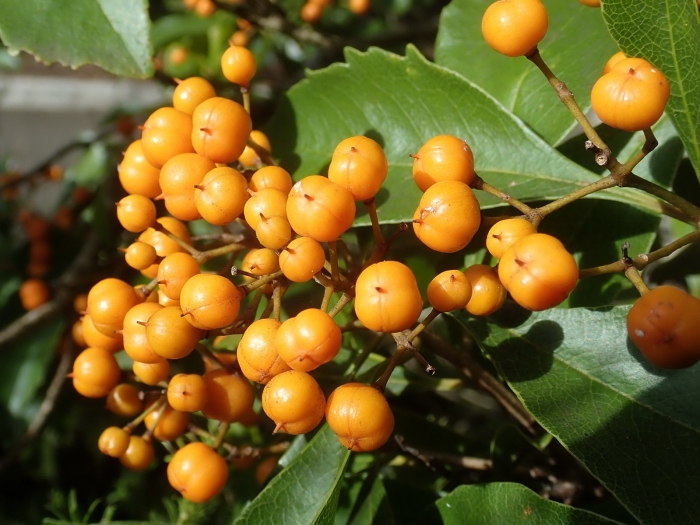Diamond Leaf Pittosporum
(Auranticarpa rhombifolia)
Diamond Leaf Pittosporum (Auranticarpa rhombifolia)
/
/

RuthP
CC BY-SA 2.0
Image By:
RuthP
Recorded By:
Copyright:
CC BY-SA 2.0
Copyright Notice:
Photo by: RuthP | License Type: CC BY-SA 2.0 | License URL: https://creativecommons.org/licenses/by-sa/2.0/ | Uploader: stitchingbushwalker | Publisher: Flickr |














Estimated Native Range
Summary
Auranticarpa rhombifolia, commonly known as Diamond Leaf Pittosporum, is an evergreen tree that is native to rainforests and the drier, more open eucalypt woodlands of Queensland and New South Wales. It can grow up to 25 meters tall with a trunk diameter of up to 45 cm. The bark is a distinctive grey, irregular, and almost corky, providing textural interest. From November to January, it produces small, fragrant white flowers arranged in terminal corymbs, which are followed by the showy orange, pear-shaped fruit capsules measuring 9 mm in length. These fruits contain two or three oval black seeds and mature from February to May. The fruit display is particularly ornamental and is a key feature that makes this tree popular in cultivation.
Diamond Leaf Pittosporum is valued for its ornamental flowers and fruit, as well as its ability to adapt to urban environments, making it an excellent choice for street or garden planting. It requires well-drained soil and thrives in full sun, which is necessary for the significant display of its orange fruit. While it can tolerate medium to high water levels, it prefers soils with medium drainage. Germination from fresh seed is notably slow, often taking up to four months, with only about a third of seeds successfully germinating. Despite this, the tree’s low maintenance and attractive appearance make it a favorite among gardeners. Care should be taken as it can become invasive if not managed properly in areas outside its native range.CC BY-SA 4.0
Diamond Leaf Pittosporum is valued for its ornamental flowers and fruit, as well as its ability to adapt to urban environments, making it an excellent choice for street or garden planting. It requires well-drained soil and thrives in full sun, which is necessary for the significant display of its orange fruit. While it can tolerate medium to high water levels, it prefers soils with medium drainage. Germination from fresh seed is notably slow, often taking up to four months, with only about a third of seeds successfully germinating. Despite this, the tree’s low maintenance and attractive appearance make it a favorite among gardeners. Care should be taken as it can become invasive if not managed properly in areas outside its native range.CC BY-SA 4.0
Plant Description
- Plant Type: Tree
- Height: 20-30 feet
- Width: 20-35 feet
- Growth Rate: Moderate
- Flower Color: White
- Flowering Season: Fall, Winter
- Leaf Retention: Evergreen
Growth Requirements
- Sun: Full Sun
- Water: Medium, High
- Drainage: Medium
Common Uses
Bird Garden, Border Plant, Butterfly Garden, Hedges, Low Maintenance, Showy Flowers, Street Planting
Natural Habitat
Native to rainforests and eucalypt woodlands of Queensland and New South Wales
Other Names
Common Names: Diamond-Leaf Pittosporum
Scientific Names: , Pittosporum rhombifolium, Auranticarpa rhombifolia,
GBIF Accepted Name: Auranticarpa rhombifolia (A.Cunn. ex Hook.) L.W.Cayzer, Crisp & I.Telford